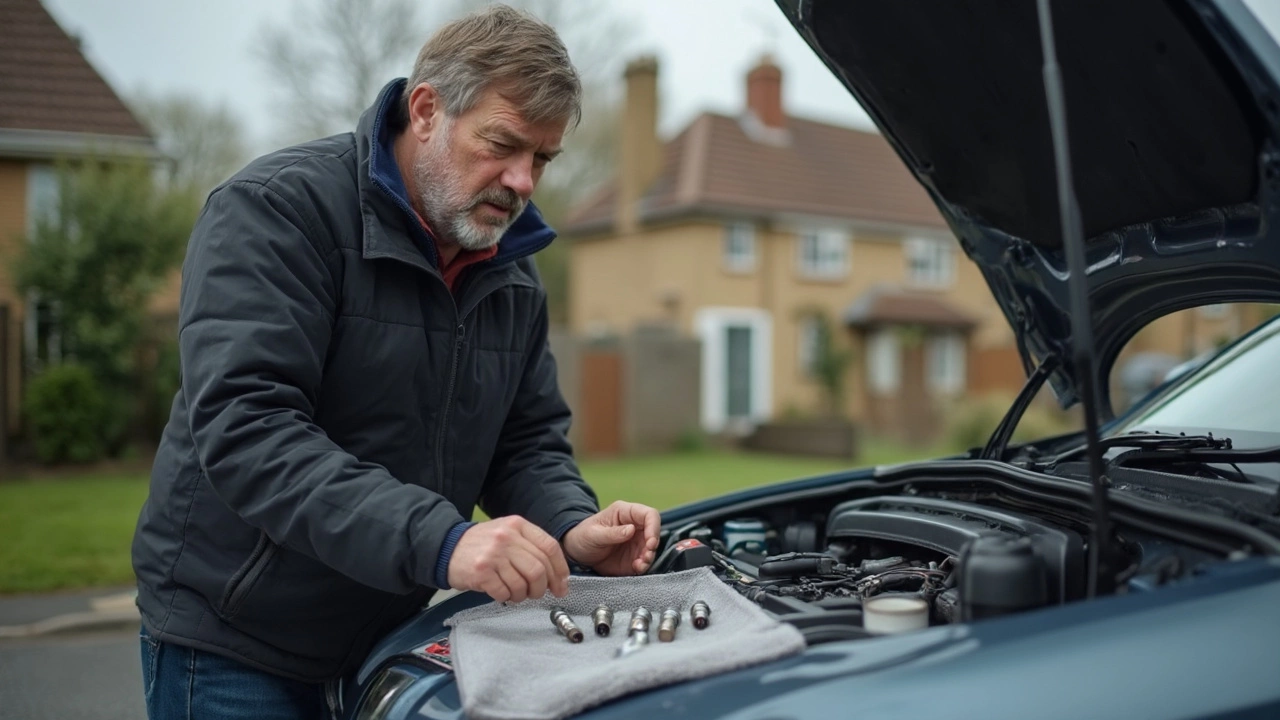Bad Ignition Coil: Signs, Diagnosis & Repair Guide
If your car is coughing, hesitating, or refusing to start, the culprit is often an ignition coil that’s gone bad. The coil turns the low‑voltage power from the battery into the high‑voltage spark needed to ignite fuel. When it fails, the spark gets weak or disappears, and the engine suffers. Below we’ll walk through the most common symptoms, how to check the coil yourself, and what to do if it needs replacing.
Common Symptoms of a Faulty Ignition Coil
First, notice what the car is doing. A bad coil usually shows up in one of three ways:
- Engine misfire or rough idle. You feel a shaking or shaking sensation, especially at low speeds or when the engine is cold.
- Hard start or no start. The engine cranks but won’t fire, or it takes several attempts to get going.
- Loss of power. Acceleration feels sluggish, and the car may stall under load.
These signs often appear on just one cylinder, so you might hear a popping sound or notice a specific spark plug firing weakly. If you’ve already replaced spark plugs and the problem remains, the coil is the next suspect.
Testing and Replacing the Ignition Coil
Testing a coil is straightforward with a multimeter. Here’s a quick step‑by‑step:
- Turn the ignition off and disconnect the battery to avoid shocks.
- Locate the coil—most modern cars have one coil per cylinder, mounted on or near the spark plug.
- Remove the coil’s electrical connector and any bolts holding it in place.
- Set your multimeter to the resistance (ohms) setting. Measure the primary side (usually two pins) and compare the reading to the specs in your car’s service manual. Typical primary resistance is 0.5–2 Ω.
- Next, measure the secondary side—between the high‑voltage output and ground. Expect 5,000–15,000 Ω for most coils.
- If either reading is out of range, the coil is defective.
When a coil is bad, replacement is cheap and simple. Most coils are bolt‑on units that snap onto the spark plug and reconnect to the harness. Make sure the new coil matches the part number for your engine; using the wrong rating can cause new problems.
After installing the new coil, reconnect the battery and start the engine. It should run smooth, idle steady, and respond quickly to the throttle. If the issue persists, you may have a deeper wiring problem or another component like the fuel injector causing the misfire.
Remember, a failing coil can damage the spark plug and even the ECU if left unchecked. Catching it early saves you money on bigger repairs down the road. If you’re not comfortable with electrical work, a quick visit to Northwich Tyres Centre will get the coil tested and fitted by a pro.
Bottom line: look for misfire, hard start, or power loss, test the resistance with a multimeter, and replace the coil if the numbers don’t match the spec. It’s a small fix that makes a big difference in how your car feels on the road.
 15 May 2025
15 May 2025
Ignition Coil or Spark Plug Bad? How to Spot the Culprit Fast
Ever wondered if your car troubles come from a bad ignition coil or a dud spark plug? This article digs into the key signs for each problem, offers real-world tests, and tells you which issues demand immediate attention. You'll learn what to listen and look for, how to try basic checks at home, and when it's worth replacing these parts. No fluff, just the info you need for quick, confident troubleshooting. Avoid extra mechanic bills and keep your ride running smooth.
Latest Posts
-

New Rotors with Old Brake Pads: Is It Worth It?
-

Suspension Noise Types: Three Sounds That Signal Trouble
-

Is it Cheaper to Resurface or Replace Rotors? Real Costs for Your Brakes
-

How Does Your Car Act When It Needs Oil? Signs You Can't Ignore
-

Should You Tip at AutoZone? Etiquette, Facts & Real Tips Explained

0